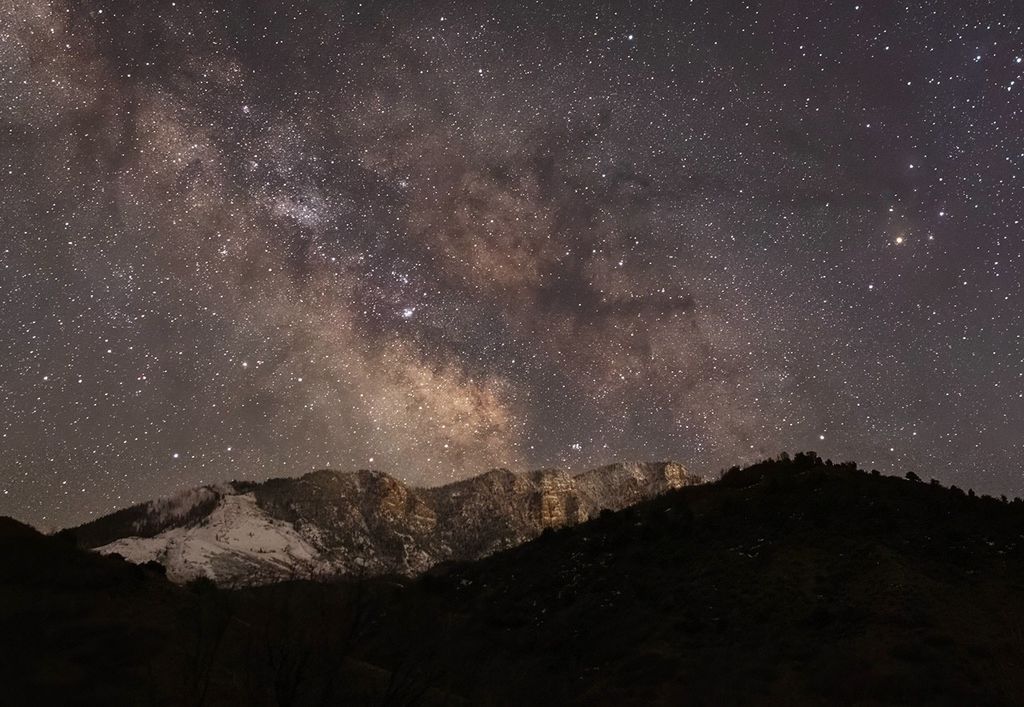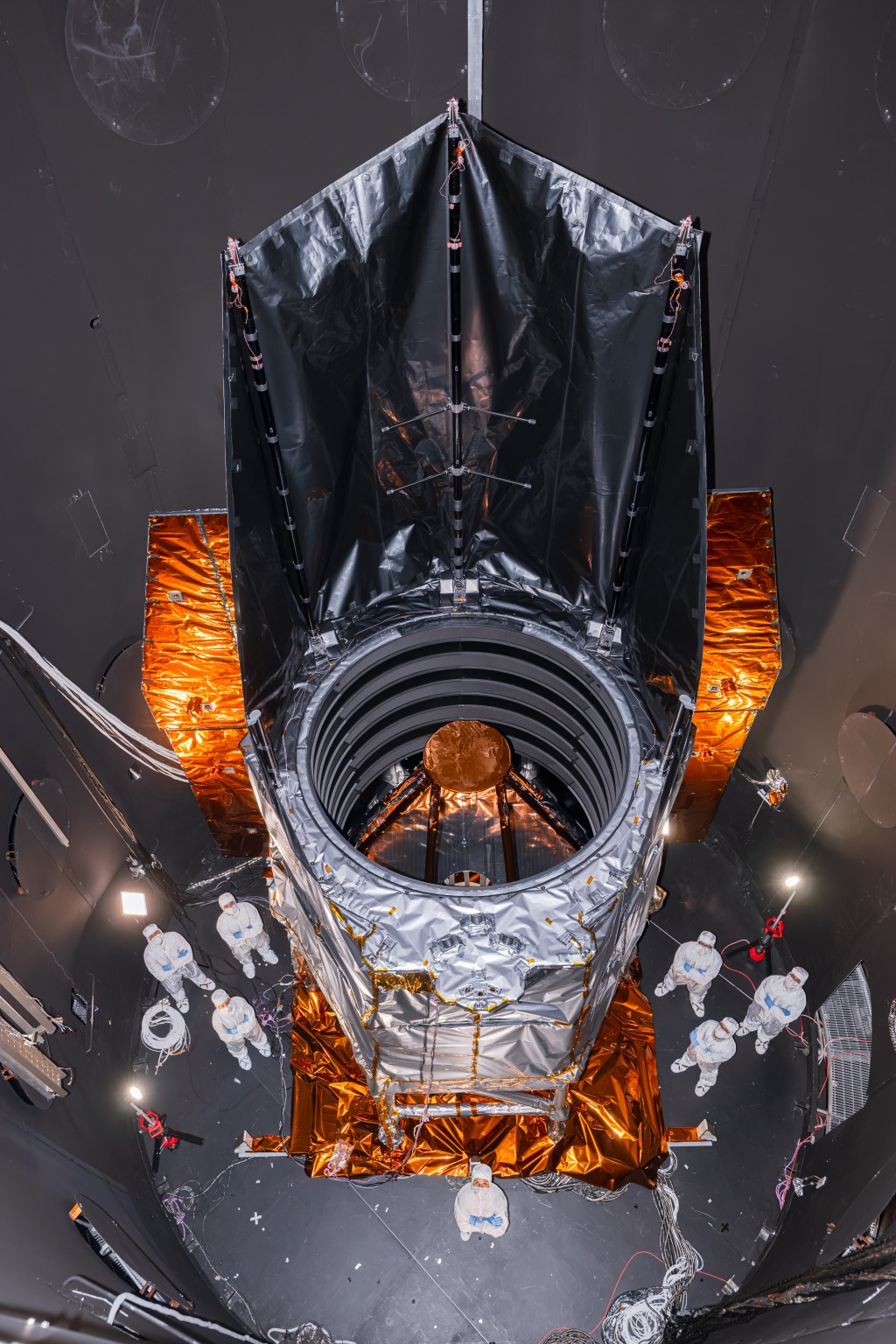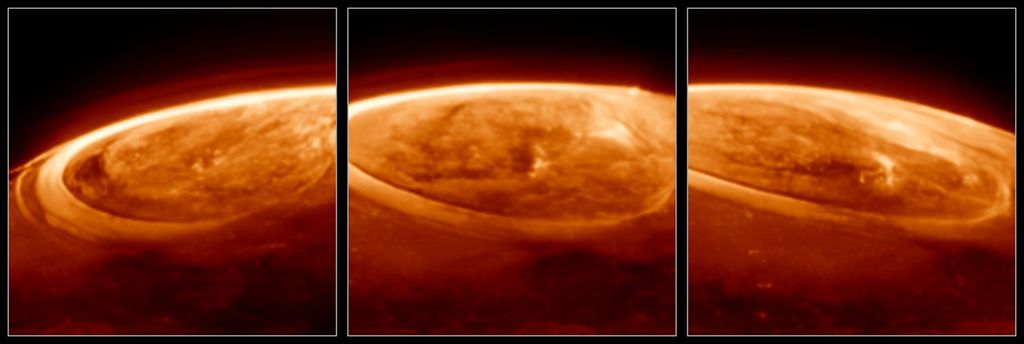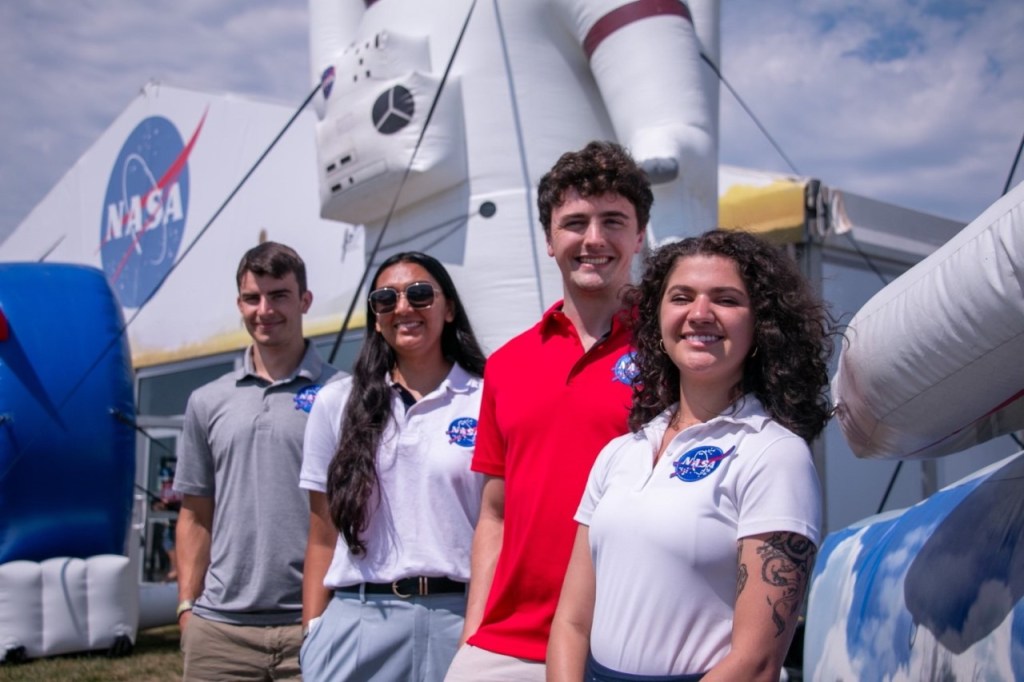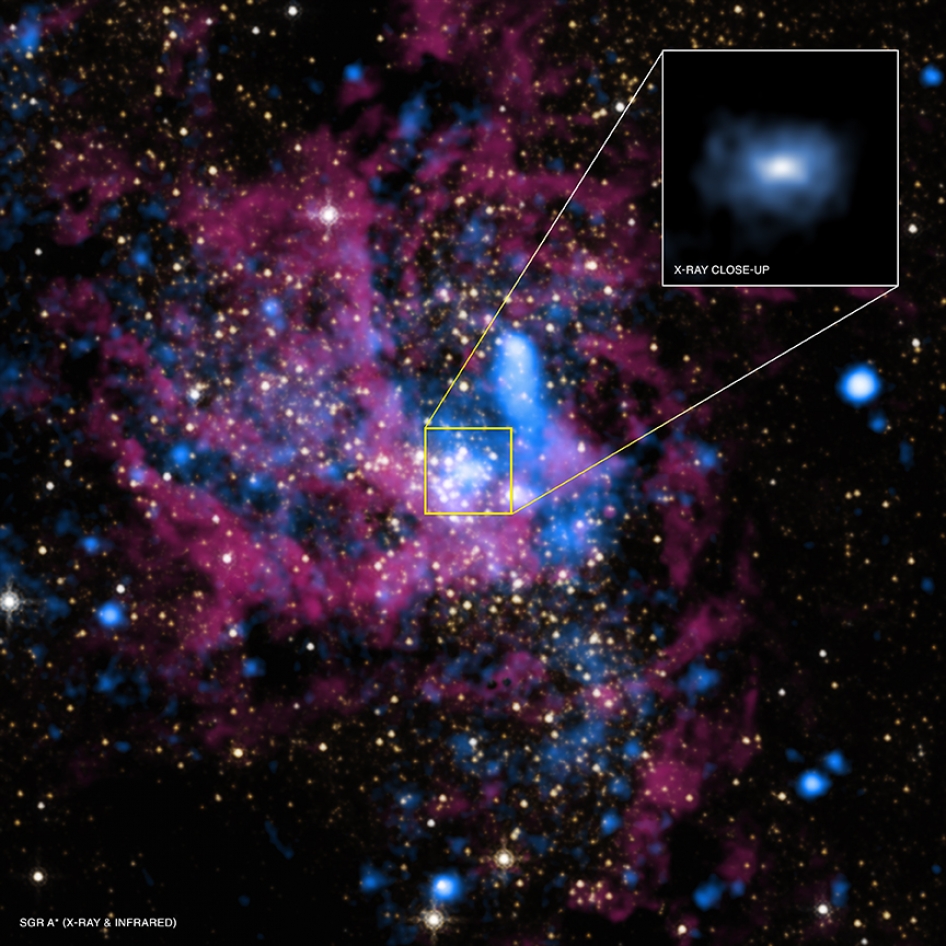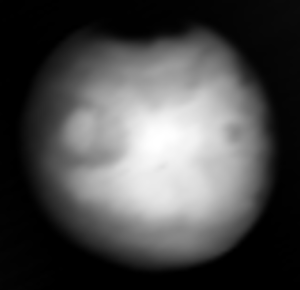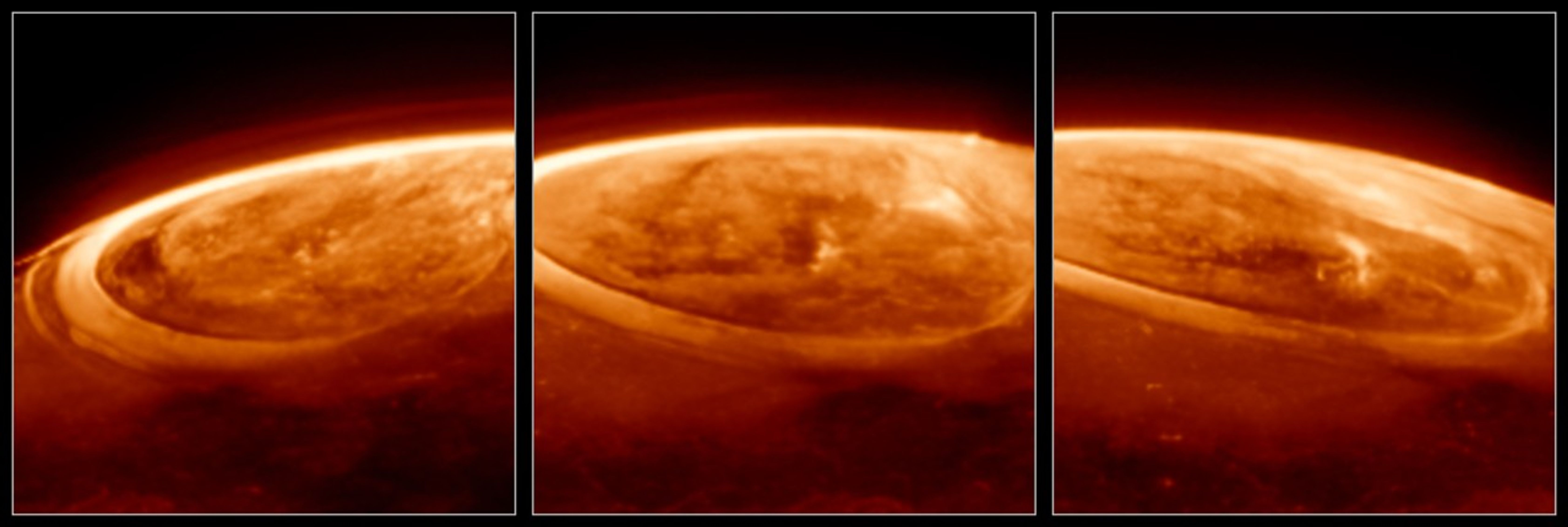26 min read
December 2021: The Next Full Moon is the Cold, Frost, and Winter Moon
Dec 13, 2021
Contents
-
The next full Moon is the Cold, Frost, and Winter Moon; the Moon before Yule and the Oak Moon; the Long Night Moon; the Child Moon; the Datta Jayanti and Thiruvathira Festivals Moon; Unduvap Poya; and the Chang'e Moon.
-
One Moon, Many Names
-
The Moon's Connection to Calendars
-
Summary of Celestial Events
-
Comet Leonard (C/2021 A1)
-
Meteor Showers
-
Evening Sky Highlights
-
Morning Sky Highlights
-
Detailed Daily Guide
-
DECEMBER 2021
-
December 13, 2021
-
December 14, 2021
-
December 15, 2021
-
December 16, 2021
-
December 17, 2021
-
December 18, 2021: The Next Full Moon
-
December 20, 2021
-
December 21, 2021: The Winter Solstice
-
December 23 - 23, 2021
-
December 26, 2021
-
December 27, 2021
-
December 28, 2021
-
December 31, 2021: New Year's Eve
-
JANUARY
-
January 1, 2022
-
January 2, 2022
-
January 3, 2022
-
January 4, 2022
-
January 5, 2022
-
January 7, 2022
-
January 8, 2022
-
January 11, 2022
-
January 12, 2022
-
January 13, 2022
-
January 14, 2022
-
January 17, 2022: The Full Moon After Next
-
What's Up: Skywatching Tips from NASA
The next full Moon is the Cold, Frost, and Winter Moon.
The next full Moon is the Cold, Frost, and Winter Moon; the Moon before Yule and the Oak Moon; the Long Night Moon; the Child Moon; the Datta Jayanti and Thiruvathira Festivals Moon; Unduvap Poya; and the Chang'e Moon.
The next full Moon will be on Saturday night, Dec. 18, 2021, appearing opposite the Sun (in Earth-based longitude) at 11:36 p.m. EST. This is close enough to midnight that it will be on Sunday from Venezuela, Bolivia, Manaus, and Canada's Atlantic time zones eastward across Europe, Africa, Asia, and Australia to the International Date Line. Most commercial calendars will show this full Moon on Sunday, Dec. 19 because they are based on Coordinated Universal Time (UTC). The Moon will appear full for three days around this time, from Friday evening through Monday morning, making this a full Moon weekend.
One Moon, Many Names
The Maine Farmers' Almanac began publishing Native American names for full Moons in the 1930s. Over time these names have become widely known and used. According to this almanac, as the full Moon in December, this is called the Cold Moon due to the long, cold nights. Other names are the Frost Moon, for the frosts as winter nears, or the Winter Moon.
As the full Moon before the winter solstice, old European names for this Moon include the Moon before Yule and the Oak Moon. Yule is a 3-day winter solstice festival celebrated in pre-Christian Europe. In the 10th Century King Haakon I associated Yule with Christmas as part of the Christianization of Norway, and this association spread throughout Europe. Some believe that the Oak Moon name ties back to ancient druid traditions of harvesting mistletoe from oak trees, a practice first recorded by the Roman historian Pliny the Elder in the 1st century CE. The term "druid" may derive from the Proto-Indo-European roots for "oak" and "to see," suggesting "druid" means "oak knower" or "oak seer."
As the full Moon closest to the winter solstice, this will be the Long Night Moon. The plane of the Moon's orbit around the Earth nearly matches the plane of the Earth's orbit around the Sun. When the path of the Sun appears lowest in the sky for the year, the path of the full Moon opposite the Sun appears highest in the sky. For the Washington, D.C., area, on Saturday evening into Sunday morning, Dec. 18 to 19, 2021, the Moon will be in the sky for a total of 15 hours 33 minutes, with 14 hours 34 minutes of this when the Sun is down, making this the longest full Moon night of the year.
These early sunsets with the full Moon in the sky could make this the Child Moon. Two years ago, then 7-year-old Astrid Hattenbach was walking home from school with her father Henry Throop (a friend and former coworker at NASA Headquarters). When she saw the rising full Moon, she said: “You know what this Moon is called? It’s called a Child Moon. Because the Moon rises at a time that the children, they can see it, because they’re not in bed, and they might even be outside like we are right now.” Henry told me of this and I thought it a perfect name.
In 2021 the earliest evenings with a full Moon in the sky will be on Friday and Saturday, Dec. 17 and 18.
For Hindus, this full Moon corresponds with the Datta Jayanti festival, commemorating the birthday of the Hindu god Dattatreya (Datta). This full Moon also corresponds with the Thiruvathira festival celebrated by Hindus in the Indian states of Kerala and Tamil Nadu.
For the Buddhists of Sri Lanka, this is Unduvap Poya. The Buddha is said to have attained enlightenment by meditating under a Bodhi Tree in India. In the 3rd century BCE, Sangamitta Theri, the daughter of Emperor Asoka and founder of an order of Buddhist nuns in Sri Lanka, brought a branch of this tree to Sri Lanka. The sapling was planted in 288 BCE by King Devanampiya Tissa in the Mahamevnāwa Park in Anuradhapura, Sri Lanka. It is said to be the oldest living human-planted tree with a known planting date.
We could also call this the Chang'e Moon, after the three Chinese lunar landers that launched and landed on the Moon this time of year. These missions get their name from the Chinese goddess of the Moon, Chang'e, who lived on the Moon with her pet rabbit, Yutu. The Chang'e 3 lander and its companion Yutu rover launched on Dec. 1 and landed on the Moon on Dec. 14, 2013. The Chang'e 4 lander and Yutu-2 rover launched Dec. 7, 2018, and landed on the Moon on Jan. 3, 2019. The Chang'e 5 lunar sample return mission launched on November 23 (in UTC, November 24 in China's time zone), collected samples from the Moon, and returned them to Earth on Dec. 16, 2020, humanity's first lunar sample return since 1976.
The Moon's Connection to Calendars
In most lunar and lunisolar calendars, the months change with the new Moon, and full Moons fall in the middle of the lunar month. This full Moon is the middle of the eleventh month of the Chinese calendar, Tevet in the Hebrew calendar, and Jumada al-awwal (also known as Jumada al-Ula) in the Islamic calendar.
As usual, the wearing of suitably celebratory celestial attire is encouraged in honor of the full Moon. Stay warm, but take advantage of these early nightfalls to get out, look up, and share the wonders of the sky!
Summary of Celestial Events
As autumn ends and winter begins, the daily periods of sunlight reach their shortest at the winter solstice and then begin to lengthen again. On Saturday, Dec. 18, 2021 (the day of the full Moon), morning twilight will begin at 6:18 a.m., sunrise will be at 7:22 a.m., solar noon will be at 12:04:53 p.m. when the Sun will reach its maximum altitude of 27.74 degrees, sunset will be at 4:48 p.m., and evening twilight will end at 5:52 p.m.
Tuesday, Dec. 21, 2021, will be the day of the Northern Hemisphere winter solstice, the astronomical end of fall, and the start of winter. The winter solstice is the day when the Sun at solar noon is the lowest in the sky and the time from sunrise to sunset is the shortest for the year. For the location of NASA Headquarters, the time from sunrise to sunset will be 9 hours, 26 minutes, 12.9 seconds. Solar noon will be at 12:06:22 p.m. when the Sun will reach its lowest daily high of the year, 27.71 degrees.
The winter solstice is sometimes called the "shortest day of the year" because it has the shortest period of daylight. It is actually nearly the longest solar day of the year (as measured for example from noon to noon on a sundial). The length of a solar day varies throughout the year (if you're interested in why I have a separate write-up available upon request).
Around the solstices, the solar days are slightly longer than the 24-hour average that our clocks use. Because of this, the earliest sunsets of the year occur before and the latest sunrises of the year (ignoring Daylight Saving Time) occur after the solstice. For Washington D.C., at least, the longest solar day of the year (measured from noon to noon on a sundial) will be from solar noon on Dec. 21 to solar noon on Dec. 22, 2021, 29.8 seconds longer than 24 hours.
Ever since 2007 when Congress moved the start of Daylight Saving Time from the end of October to the beginning of November, the latest sunrises of the year (in Daylight Saving Time) have been occurring in late October and early November, just before we switch back to Standard Time. Ignoring Daylight Saving Time, for the Washington, D.C. area, Tuesday and Wednesday, Jan. 4 and 5, 2022, are tied for the latest sunrises of the year, with sunrises at 7:26:56 a.m. EST.
By Monday, Jan. 17, 2022, (the day of the full Moon after next), morning twilight will begin at 6:18 a.m., sunrise will be at 7:22 a.m., solar noon will be at 12:04:53 p.m. when the Sun will reach its maximum altitude of 27.74 degrees, sunset will be at 4:48 p.m., and evening twilight will end at 5:52 p.m.
Comet Leonard (C/2021 A1)
In my previous Full Moon Guide for November to December 2021, I provided more information about comet Leonard. I've updated some day-by-day predictions in the Detailed Daily Guide below. Based on how bright comet Leonard has been appearing recently, it looks like it will not be as bright as last year's comet NEOWISE. This comet should be visible with a backyard telescope or binoculars and may be visible to the naked eye under very clear and dark observing conditions. Keep an eye on the sky and pay attention to the news, because sometimes comets can surprise us by giving large outbursts of gas and dust as they approach the Sun, and newer observations and better models can improve the predictions of how visible this comet might become.
In terms of getting a clear view, comet Leonard passed its closest to the Earth on Dec. 12, 2021, at 8:54 a.m. EST. The peak brightness is expected to be around Dec. 13 or 14, about 1 to 2 days after its closest to the Earth. Around the closest approach, the best viewing will shift from the Northern Hemisphere to the Southern Hemisphere. For the Washington, D.C. area, viewers will need a clear view of the horizon, as the comet will only be a few degrees above the horizon as evening twilight ends, and for more northern latitudes it will not appear above the horizon at all.
Note that the specific times and angles I provide are based on Washington, D.C., so the times and time zones may be different for your location. For evening viewing of comet Leonard in particular, after Dec. 13 the viewing quickly shifts across the northern mid-latitudes to the Southern Hemisphere. There are a number of online astronomy tools that allow you to enter your location and get location-specific graphics to guide your comet viewing.
Meteor Showers
Also in last month's posting, I provided information about viewing the Geminid meteor shower that is expected to peak the morning of Dec. 14, 2021.
The Quadrantid meteor shower will begin to show a few meteors around Dec. 28, 2021, and is expected to have a short, sharp peak the afternoon of Jan. 3, 2022 (in EST, when we will not be able to see them from the Americas), then taper off by Jan. 12. Even though we can't see this peak, with no moonlight to interfere on the mornings of Jan. 3 and 4, 2022, if you find yourself in a dark location after midnight but before morning twilight begins with a clear view of a clear night sky, keep an eye out, as you may see some of these meteors. If you really want to see the peak of this meteor shower, somewhere in Asia or Eastern Europe would be the place to go this year.
I've opted not to include descriptions of several smaller meteor showers that are expected to peak at between 3 and 10 meteors per hour (under ideal conditions) during this lunar cycle, as most of us are in areas with too much light pollution to be able to see these meteors.
Evening Sky Highlights
On the evening of Saturday, Dec. 18, 2021 (the day of the full Moon), as evening twilight ends (at 5:52 p.m. EST), the brightest planet visible will be Venus, appearing 11 degrees above the southwestern horizon. The next brightest planet will be Jupiter, appearing 34 degrees above the south-southwestern horizon. The faintest of the visible planets in the sky will be Saturn, appearing to the right of Jupiter at 21 degrees above the southwestern horizon. The planet Mercury will have already set by the time evening twilight ends but it may be visible if you have a very clear view of the southwestern horizon from about 30 minutes after sunset (5:18 p.m.) until Mercury sets 9 minutes later.
Comet Leonard will be about 7 degrees above the southwestern horizon, but will likely be faint enough to require a telescope to see. No particularly bright star will appear overhead, with Deneb the closest at 58 degrees above the west-northwestern horizon. Deneb is about 2,600 light-years from Earth and is the 19th brightest star in our night sky.
As the lunar cycle progresses, Venus, Jupiter, Saturn, and the background of stars will appear to shift toward the West each evening (although it is actually the Earth that is moving around the Sun toward the East), while the planet Mercury will appear to shift the other direction, beginning to appear above the west-southwestern horizon as evening twilight ends on Dec. 27.
New Year's Eve, Dec. 31, 2021, will be the last evening that the bright planet Venus will appear above the horizon as evening twilight ends, although it may still be visible in the glow of dusk 30 minutes after sunset for a few more evenings.
The waxing crescent Moon will appear near Mercury the evening of Jan. 3, Saturn the evening of Jan. 4, and Jupiter the evening of Jan. 5, 2022.
Jan. 8 will be the evening when the planet Mercury will appear at its highest above the west-southwestern horizon as evening twilight ends (4.5 degrees), after which it will start shifting back toward the horizon like the other planets and begin to dim as it becomes more of a crescent. At first, Saturn will appear to be catching up with Mercury, and they will appear at their closest (3.3 degrees apart) on Jan. 12, with Mercury the brighter of the pair and appearing to the lower right of Saturn. After this, Mercury will start shifting toward the horizon faster than Saturn and the pair will appear to separate each evening.
By the evening of Monday, Jan. 17, 2022 (the day of the full Moon after next), as evening twilight ends (at 6:14 p.m. EST), the brightest planet visible will be Jupiter, appearing 20 degrees above the southwestern horizon. The other visible planet will be Saturn, appearing to the lower right of Jupiter at only 2 degrees above the horizon and setting 15 minutes later. The planet Mercury, now appearing fainter than Saturn, will have set about 2 minutes earlier. The full Moon will appear in the east-northeastern horizon near the bright star Pollux. No particularly bright star will appear overhead, with Capella the closest at 53 degrees above the east-northeastern horizon. Although we see Capella as a single star (the 6th brightest in our night sky), it is actually four stars (two pairs of stars orbiting each other). Capella is about 43 lightyears from us.
Morning Sky Highlights
On the morning of Dec. 18, 2021 (the day of the full Moon), as morning twilight begins (at 6:25 a.m. EST), the only visible planet in the sky will be Mars, appearing 7 degrees above the southeastern horizon. The bright stars of the local arm of our home galaxy will have already set. No particularly bright star will appear close to overhead, with the closest being Arcturus at slightly more than 54 degrees above the east-southeastern horizon. A close second will be Regulus at slightly less than 54 degrees above the southwestern horizon. Arcturus is the 4th brightest star in our night sky and is 36.7 light-years from us. While it has about the same mass as our Sun, it is about 2.6 billion years older and has used up its core hydrogen, becoming a red giant about 25 times the size and 170 times the brightness of our Sun.
As the lunar cycle progresses, Mars and the background of stars will appear to shift toward the West each morning, with Mars appearing to move more slowly (as it too is going around the Sun in the same direction we are going). In late December, Mars and the bright star Antares will appear near each other low on the southeastern horizon. Because Mars will be on the far side of the Sun as seen from Earth, it will appear fainter than Antares. They will be at their closest (4.5 degrees) the morning of Dec. 27, 2021, with Mars to the upper left and Antares to the lower right. Antares has a reddish color like Mars and the name "Antares" is sometimes translated as "the rival of Mars". The waning Moon will appear near the bright star Pollux on Dec. 21, Regulus on Dec. 24, Spica on Dec. 28, and Regulus and Mars on Dec. 31. Around Jan. 11, 2022, the bright planet Venus will begin to emerge from the glow of dawn about 30 minutes before sunrise and will begin appearing above the east-southeastern horizon before morning twilight begins around Jan. 15.
By the morning of Jan. 17, 2022, (the day of the full Moon after next), as morning twilight begins (at 6:23 AM EST), the bright planet Venus will appear only 2 degrees above the east-southeastern horizon and the fainter planet Mars will appear 10 degrees above the southeastern horizon. The full Moon will appear low on the west-northwestern horizon near the bright star Pollux. The bright star appearing closest to overhead will be Arcturus at 70 degrees above the southern horizon. Also nearly overhead toward the North will be the constellation Ursa Major, also known as the Big Dipper.
Detailed Daily Guide
Here is a more detailed, day-by-day listing of celestial events between now and the full Moon after next. Please note that the times and angles I give are based on the location of NASA Headquarters in Washington, D.C.
DECEMBER 2021
December 13, 2021
On Monday evening, Dec. 13, 2021, Comet Leonard will appear about 2 degrees above the west-southwestern horizon as evening twilight ends (at 5:50 p.m.) and will set about 12 minutes later. If you can find a clear view of the horizon, this should be a good time to look for this comet.
December 14, 2021
As mentioned above, the Geminid meteor shower is predicted to peak early on the morning of Tuesday, Dec. 14, 2021. The best time to look should be after moonset (2:59 a.m. EST) but before the sky begins to show any sign of dawn (6:16 a.m.). Under ideal conditions, this meteor shower can peak at 140 to 150 visible meteors per hour.
On Tuesday evening, Dec. 14, 2021, comet Leonard will appear about 3.5 degrees above the west-southwestern horizon as evening twilight ends (at 5:50 p.m.) and will set about 22 minutes later. If this comet is giving off a lot of dust that causes forward scattering (like the bright glow around the edge of a cloud that is blocking the Sun), this might be near when the comet is at its maximum brightness.
December 15, 2021
Wednesday evening, Dec. 15, 2021, will be the first evening that the planet Mercury will appear above the west-southwestern horizon 30 minutes after sunset (an approximation of when it may start being visible in the glow of dusk).
Comet Leonard will appear about 4.5 degrees above the west-southwestern horizon as evening twilight ends (at 5:51 p.m.) and will set about 29 minutes later.
December 16, 2021
On Thursday evening, Dec. 16, 2021, comet Leonard will appear about 5.5 degrees above the southwestern horizon as evening twilight ends (at 5:51 p.m.) and will set about 37 minutes later.
December 17, 2021
On Friday evening, Dec. 17, 2021, comet Leonard will appear 6 degrees above the southwestern horizon and about 5 degrees below the bright planet Venus as evening twilight ends (at 5:51 p.m.). It may not be easy to see by this time without binoculars or a telescope, but Venus may provide a bright guide for finding the comet. The comet will set about 45 minutes later. Comet Leonard will continue to appear above the horizon at the time evening twilight ends until around Jan. 10, 2022, becoming dimmer each evening as it moves away from the Earth toward the Sun.
Friday evening at 9:16 p.m. EST the Moon will be at apogee, its farthest from the Earth for this orbit.
The evenings of Friday and Saturday, Dec. 17 and 18, 2021, will be the earliest evenings with a full Moon in the sky for the year, called the Child Moon.
December 18, 2021: The Next Full Moon
As mentioned above, the next full Moon will be Saturday night, Dec. 18, 2021, at 11:36 p.m. EST. The Moon will be in the sky for a total of 15 hours 33 minutes, with 14 hours 34 minutes of this when the Sun is down, making Saturday evening into Sunday morning, Dec. 18 to 19, the longest full Moon night of the year. The Moon will appear full for three days around this time, from Friday evening through Monday morning, making this a full Moon weekend.
December 20, 2021
Monday night into Tuesday morning, Dec. 20 to 21, 2021, the bright star Pollux will appear near the waning gibbous Moon. The Moon will rise above the northeastern horizon at 6 p.m. with Pollux rising to the lower left of the Moon about 10 minutes later. Pollux will appear to the upper left of the Moon as the Moon reaches its highest in the sky on Tuesday morning at 1:48 a.m. and will have shifted to the upper right of the Moon by the time morning twilight begins at 6:20 a.m.
December 21, 2021: The Winter Solstice
Tuesday morning, Dec. 21, 2021, at 10:59 a.m. EST, will be the Northern Hemisphere winter solstice, the astronomical end of fall, and the beginning of winter. This will be the day with the shortest period of sunlight (9 hours, 26 minutes, 12.9 seconds from sunrise to sunset) and when the Sun at solar noon will be at its lowest in the sky for the year (27.71 degrees). The longest solar day of the year (measured from noon to noon on a sundial) will be from noon on Dec. 21 to noon on Dec. 22, lasting 29.8 seconds longer than the 24-hour average we use for our clocks.
December 23 - 23, 2021
Thursday night into Friday morning, Dec. 23 to 24, 2021, the bright star Regulus will appear near the waning gibbous Moon. The Moon will rise above the east-northeastern horizon at 9:01 p.m. with Regulus rising to the lower right of the Moon about 23 minutes later. Regulus will appear to the lower right of the Moon as the Moon reaches its highest in the sky on Friday morning (at 4:13 AM) and will have shifted to below the Moon by the time morning twilight begins (at 6:21 AM).
December 26, 2021
Sunday, Dec. 26, 2021, the waning Moon will appear half-full as it reaches its last quarter at 9:24 p.m. EST.
December 27, 2021
On Monday morning, Dec. 27, 2021, the bright star Antares and the planet Mars will appear nearest to each other for this apparition, 4.5 degrees apart low on the southeastern horizon. Mars will be to the upper left and Antares to the lower right. Mars will appear fainter than Antares because it will be on the far side of the Sun as seen from Earth. Antares has a reddish color like Mars and the name "Antares" is sometimes translated as "the rival of Mars." This should give you the opportunity to make the comparison yourself.
Monday evening will be the first evening the planet Mercury will appear above the west-southwestern horizon as evening twilight ends.
December 28, 2021
On Tuesday morning, Dec. 28, 2021, the bright star Spica will appear about 4 degrees to the lower right of the waning crescent Moon. The Moon will rise first and Spica will rise above the east-southeastern horizon at 1:40 a.m. EST. The pair will appear about 40 degrees above the south-southeastern horizon as morning twilight begins at 6:22 a.m.
Tuesday evening will be when the bright planets Venus and Mercury will appear at their closest to each other low on the west-southwestern horizon. Bright Venus will be easier to spot, with Mercury about 4 degrees to the lower left. Try looking after about 30 minutes after sunset (after 5:23 p.m. EST) but well before Mercury sets at 6 p.m.
December 31, 2021: New Year's Eve
On the morning of Friday, Dec. 31, 2021, the waning crescent Moon, the bright star Antares, and the planet Mars will appear to form a triangle near the horizon. Antares will rise last above the southeastern horizon at 5:30 a.m EST with Mars to the left and the Moon above. This triangle will appear about 10 degrees above the southeastern horizon by the time morning twilight begins 6:23 AM).
New Year's Eve, Friday evening, Dec. 31, 2021, will be the last evening that the bright planet Venus will appear above the horizon as evening twilight ends.
JANUARY
January 1, 2022
Saturday, Jan. 1, 2022, at 5:56 p.m. EST, the Moon will be at perigee, its closest to the Earth for this orbit.
January 2, 2022
Sunday afternoon, Jan. 2, 2022, at 1:34 p.m. EST, will be the new Moon, when the Moon passes between the Earth and the Sun and will not be visible from the Earth. The day of, or the day after, the New Moon marks the start of the new month for most lunisolar calendars. Sundown on Jan. 2 marks the start of Shevat in the Hebrew calendar. The 12th month of the Chinese calendar starts on Jan. 3 (at midnight in China's time zone, which is 13 hours ahead of EST). In the Islamic calendar, the months traditionally start with the first sighting of the waxing crescent Moon. Many Muslim communities now follow the Umm al-Qura Calendar of Saudi Arabia, which uses astronomical calculations to start months in a more predictable way. Using this calendar, sundown on Jan. 3 will probably mark the beginning of the sixth month of the year, Jumada al-Thani, also known as Jumada al-Akhirah or Jumada al-Akhir.
January 3, 2022
As mentioned above, the annual Quadrantid meteor shower is expected to have a short, sharp peak on the afternoon of Jan. 3, 2022, when we will not be able to see these meteors from the Americas. Even though we can't see this peak, with no moonlight to interfere on the mornings of Sunday and Monday, Jan. 3 and 4, if you find yourself in a dark location after midnight but before morning twilight begins, and if you have clear weather and a clear view of the sky, keep an eye out, as you may see some of these meteors. If you happen to be in Asia or Eastern Europe this year, the peak rate of visible meteors for this shower (under ideal conditions) tends to vary from 60 to 200 meteors per hour and is usually around 120 per hour.
On Monday evening, if you have a clear view of the west-southwestern horizon, you might be able to see in the glow of dusk the thin, waxing crescent Moon about 4 degrees below the bright planet Mercury. You will need to look between about 30 minutes after sunset (5:29 p.m. EST) when the Moon will be about 4 degrees above the horizon until the Moon sets at 6 p.m. a few minutes before evening twilight ends.
January 4, 2022
Early Tuesday morning, Jan. 4, 2022, the Earth will be at perihelion, the closest the Earth gets to the Sun in our orbit. Between perihelion and 6 months later when the Earth is at its farthest from the Sun (aphelion) there is about a 6.7% difference in the intensity of the sunlight reaching the Earth, one of the reasons the seasons in the Southern Hemisphere are more extreme than in the Northern Hemisphere. Perihelion is also when the Earth is moving its fastest in its orbit around the Sun, so if you run east at local midnight, you will be moving about as fast as you can (in Sun-centered coordinates) for your location.
Ignoring Daylight Saving Time, for the Washington, D.C. area, Tuesday and Wednesday, Jan. 4 and 5, 2022, are tied for the latest sunrises of the year, with sunrises at 7:26:56 a.m. EST.
On Tuesday evening, Jan. 4, 2022, the planet Saturn will appear to the right of the waxing crescent Moon. The pair will appear about 11 degrees above the southwestern horizon as evening twilight ends (at 6:02 p.m. EST) and Saturn will set first about 1 hour, 11 minutes later (at 7:13 p.m.).
January 5, 2022
Wednesday evening, Jan. 5, 2022, will be the last evening that the bright planet Venus will be above the horizon 30 minutes after sunset, an approximation of when it will no longer be visible in the glow of dusk.
The bright planet Jupiter will appear about 7 degrees above the waxing crescent Moon. The Moon will appear about 22 degrees above the southwestern horizon as evening twilight ends at 6:03 p.m. EST, and the Moon will set first about 2 hours 27 minutes later at 8:30 p.m.
January 7, 2022
Friday morning, Jan. 7, 2022, will be when the planet Mercury reaches its greatest angular separation from the Sun as seen from the Earth for this apparition (called greatest elongation), appearing half-lit through a large enough telescope. Because the angle of the line between the Sun and Mercury and the horizon changes with the seasons, the date when Mercury and the Sun appear farthest apart is not the same as when Mercury appears highest above the horizon as evening twilight ends.
January 8, 2022
Saturday evening, Jan. 8, 2022, will be the evening when the planet Mercury will appear at its highest above the west-southwestern horizon (4.5 degrees) as evening twilight ends (at 6:05 p.m.). Mercury will set less than a half-hour later at 6:33 p.m.
Also Saturday evening, the planet Venus will be passing between the Earth and the Sun as seen from the Earth, called inferior conjunction. Planets that orbit inside of the orbit of Earth can have two types of conjunctions with the Sun, inferior (when passing between the Earth and the Sun) and superior (when passing on the far side of the Sun as seen from the Earth). Venus will be shifting from the evening sky to the morning sky and will begin emerging from the glow of dawn on the eastern horizon on or after Jan. 11.
January 11, 2022
On Sunday afternoon, Jan. 9, 2022, the Moon will appear half-full as it reaches its first quarter at 1:11 p.m. EST.
January 12, 2022
On Wednesday evening, Jan. 12, 2022, if you have a clear view of the west-southwestern horizon, you might be able to see the planets Mercury and Saturn appearing 3.3 degrees apart. Mercury will be 4 degrees above the horizon as evening twilight ends (6:09 p.m. EST) with Saturn to the upper left. Mercury will set first 24 minutes later (6:33 p.m.). The pair will appear near each other for several evenings around this time, with this the evening they will appear at their closest.
January 13, 2022
Thursday evening into Friday morning, Jan. 13 to 14, 2022, the bright star Aldebaran will appear near the waxing gibbous Moon. Aldebaran will be about 6 degrees to the lower right of the Moon as evening twilight ends Thursday night at 6:10 p.m. Aldebaran will have shifted to appear about 7 degrees below the Moon as the Moon reaches its highest in the sky for the night at 9:12 p.m. Aldebaran will set below the west-northwestern horizon on Friday morning at 4 a.m.
January 14, 2022
Friday morning, Jan. 14, 2022, at 4:27 a.m. EST, the Moon will be at apogee, its farthest from the Earth for this orbit.
January 17, 2022: The Full Moon After Next
The full Moon after next will be Monday evening, Jan. 17, 2022, at 6:48 p.m. EST. The Moon will appear full for about three days around this time, from Sunday evening through Wednesday morning. The bright star appearing near the full Moon on Sunday and Monday will be Pollux, the brighter of the twins in the constellation Gemini.
What's Up: Skywatching Tips from NASA
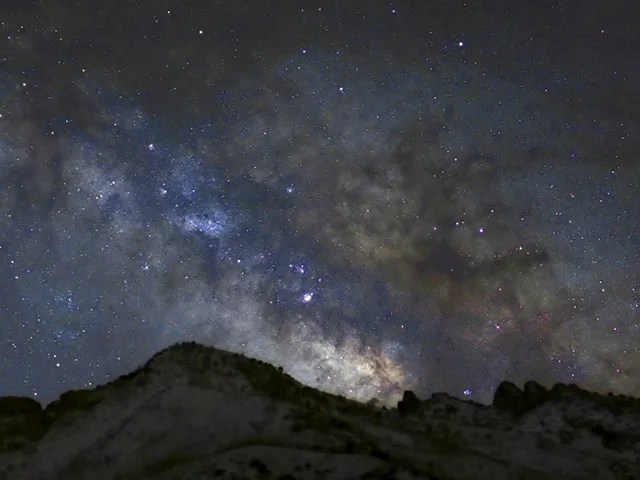
Skywatching tips, guides, and FAQs.
Read more
Keep Exploring
Discover More Topics From NASA




